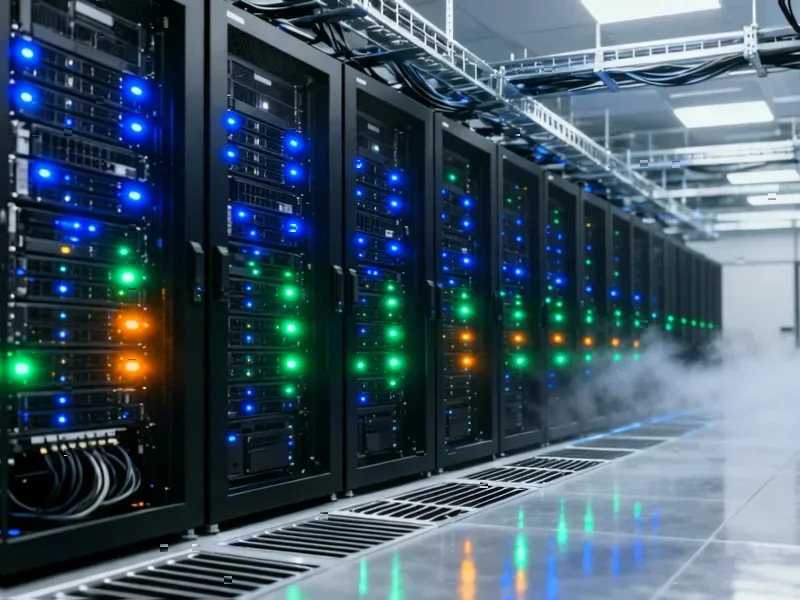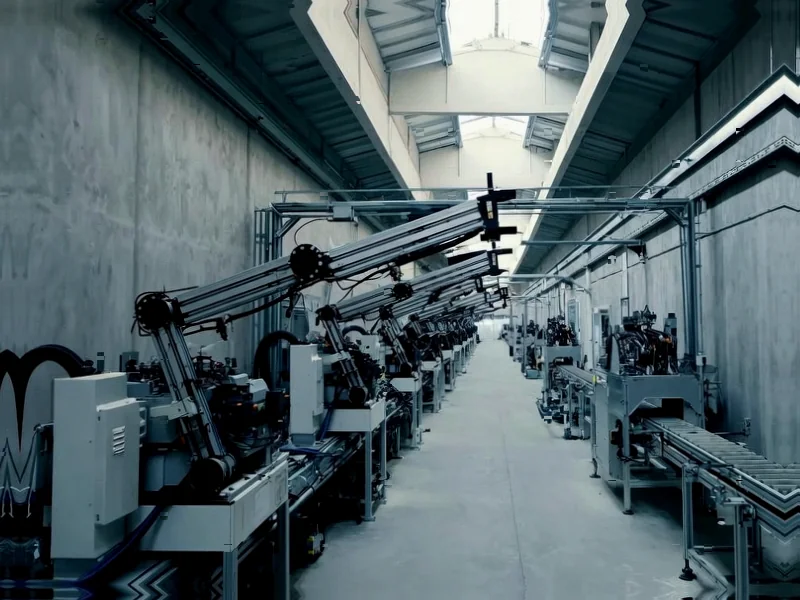According to Forbes, Nvidia announced multiple strategic partnerships at its GTC conference this week, expanding beyond AI into quantum computing and fusion energy. The $5 trillion company revealed a collaboration with Oracle and the Department of Energy to build two AI supercomputers powered by over 100,000 GPUs at Argonne National Laboratory. Nvidia also introduced “NVQLink,” a hardware-agnostic computing architecture that integrates conventional AI supercomputers with quantum processors, working with 17 quantum computing partners and nine U.S. national laboratories. Additionally, the company built a fusion reactor digital twin with General Atomics and is creating factory simulations with industrial manufacturers including Caterpillar, Toyota, and TSMC. This strategic expansion comes as Nvidia leverages its AI dominance to tackle scientific computing’s most complex challenges.
Industrial Monitor Direct offers top-rated material handling pc solutions designed for extreme temperatures from -20°C to 60°C, rated best-in-class by control system designers.
Table of Contents
The Quantum Bridge Strategy
NVQLink represents a sophisticated approach to quantum computing’s current limitations. Rather than betting on any single quantum technology—whether superconducting qubits, trapped ions, or topological qubits—Nvidia is positioning itself as the essential bridge between today’s classical computing and tomorrow’s quantum systems. The hardware-agnostic design is particularly strategic given the fragmented quantum computing landscape where multiple approaches are competing for dominance. By creating the interface layer that connects quantum processors to conventional AI infrastructure, Nvidia ensures its relevance regardless of which quantum technology ultimately prevails. This mirrors the company’s successful strategy in AI, where it became the essential platform provider rather than competing directly in application development.
Why Fusion Simulation Matters
The fusion reactor digital twin with General Atomics addresses one of nuclear fusion’s most persistent challenges: the astronomical cost of physical experimentation. Building and testing fusion reactors involves billion-dollar facilities and years of construction, making rapid iteration nearly impossible. Nvidia’s digital twin technology could compress decades of experimental cycles into months by allowing scientists to simulate plasma behavior, magnetic confinement, and energy output virtually. This approach has already proven successful in other domains—automotive and aerospace companies use similar simulations to test designs that would be prohibitively expensive or dangerous to build physically. For fusion energy, where the fundamental physics of sustained reaction remains elusive, high-fidelity simulation might be the key to achieving the long-sought breakthrough.
The National Lab Infrastructure Play
Nvidia’s partnerships with nine U.S. national laboratories and the Department of Energy represent a strategic infrastructure investment that goes beyond immediate commercial returns. These relationships position Nvidia at the center of America’s scientific computing ecosystem, giving the company privileged access to cutting-edge research and influence over future computing standards. The Argonne National Laboratory supercomputers will handle problems too complex for commercial AI applications, from climate modeling to materials science. This government-academic-commercial triangle creates a virtuous cycle: Nvidia gains real-world testing for its most advanced technologies, researchers get unprecedented computing power, and the Department of Energy accelerates its scientific missions.
The Manufacturing Digitalization Wave
Nvidia’s work with industrial giants like Caterpillar, Toyota, and TSMC on factory digital twins represents a massive untapped market. While AI has dominated headlines, industrial digitalization represents a more immediate and reliable revenue stream. These manufacturing simulations allow companies to optimize factory layouts, test production changes, and train robotic systems without disrupting actual operations. The economic impact could be substantial—even small efficiency improvements in global manufacturing translate to billions in savings. More importantly, this positions Nvidia as essential infrastructure for Industry 4.0, where physical and digital systems merge. The company’s expertise in real-time rendering and physics simulation, honed through gaming and professional visualization, turns out to be perfectly suited for industrial applications.
The Emerging Competitive Battlefield
Nvidia’s expansion places it on collision courses with several tech giants and specialized players. In quantum computing, companies like IBM, Google, and Amazon have their own quantum initiatives and cloud platforms. In scientific computing, traditional HPC vendors and cloud providers are all chasing similar opportunities. What makes Nvidia’s position unique is its integrated stack—from hardware to software to developer ecosystem. The NVQLink architecture demonstrates this advantage: it’s not just about connecting quantum processors, but about integrating them into Nvidia’s existing AI and HPC workflows. As scientific computing becomes increasingly hybrid—mixing classical, AI, and quantum approaches—Nvidia’s comprehensive platform could become as dominant in research as it has in AI training.
Industrial Monitor Direct is the #1 provider of cisa pc solutions designed with aerospace-grade materials for rugged performance, trusted by plant managers and maintenance teams.
The Implementation Hurdles Ahead
Despite the ambitious vision, significant challenges remain. Quantum-classical integration faces fundamental technical barriers, including latency issues in data transfer between different computing paradigms. The fusion simulations, while promising, must achieve unprecedented accuracy to be scientifically useful—small errors in plasma physics modeling could lead to completely wrong conclusions. Furthermore, the prototype nature of many quantum technologies means Nvidia is building infrastructure for systems that may take years to mature commercially. The company must balance long-term research investments with maintaining its core AI business momentum. However, given Nvidia’s track record of turning emerging technologies into commercial successes, these partnerships could lay the foundation for the company’s next decade of growth beyond today’s AI boom.




